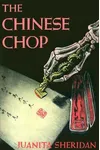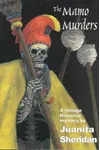Picture a spirited storyteller who spun tales of mystery and resilience in post-war America—meet Juanita Sheridan! Born in 1906, this Oklahoma native transformed her adventurous, often turbulent life into the captivating Lily Wu and Janice Cameron mystery series. With her sharp wit and fearless spirit, Sheridan crafted stories that broke boundaries, blending suspense with bold commentary on race and gender.
From dodging Pancho Villa’s shadow to navigating the hustle of 1940s New York, Sheridan’s life was as thrilling as her novels. Her groundbreaking detective, Lily Wu, the first Asian-American female sleuth, brought fresh perspective to a genre dominated by predictable tropes. Ready to dive into her world? Let’s explore the woman behind the mysteries!
The Making of Juanita Sheridan
Juanita Lorraine Light was born on November 15, 1906, in Oklahoma, where her early life was anything but ordinary. She claimed her grandfather was killed by Pancho Villa and her father possibly poisoned by a rival—a backstory that sounds straight out of her novels. After her father’s death, young Juanita and her mother roamed the American West, with Juanita often traveling alone by train, a tag around her neck declaring her destination. This independence shaped her resilience. By the 1930s, a single mother during the Great Depression, she left her son with a foster family and sailed to Hawaii to focus on writing, a bold move that fueled her creative spark.
Juanita Sheridan’s Unforgettable Stories
Sheridan’s literary breakthrough came with The Chinese Chop (1949), the first of four novels in the Lily Wu and Janice Cameron series. Set in a post-war New York grappling with a housing shortage, the novel introduces Lily Wu, a cunning Chinese-American sleuth, and Janice Cameron, her novelist sidekick. The duo navigates a Washington Square rooming house teeming with secrets, unraveling murders with sharp intellect and grit. Critics, including Anthony Boucher, praised Lily as a standout female detective, blending charm with professional prowess.
The series continued with The Kahuna Killer (1951), The Mamo Murders (1952), and The Waikiki Widow (1953), all set in vibrant, multicultural Hawaii. Sheridan’s mysteries stood out for their vivid settings—think bustling Honolulu or bohemian Manhattan—and feminist undertones. Her characters defied 1950s gender norms, and Lily’s Chinese heritage added depth to narratives rarely seen in the era’s detective fiction. Sheridan’s style, marked by snappy dialogue and naturalistic plotting, drew from her own experiences, lending authenticity to her tales of intrigue.
Why Juanita Sheridan Matters
Sheridan’s impact lies in her trailblazing approach to detective fiction. By creating Lily Wu, she introduced one of the first Asian-American female detectives, challenging racial and gender stereotypes in a genre often steeped in convention. Her novels captured the social dynamics of post-war America, from the lingering scars of the Great Depression to the multicultural vibrancy of Hawaii. Though her output was small—just four solo novels and one co-authored work—her influence endures among fans of classic mysteries and scholars of feminist literature.
Republished by Rue Morgue Press in the 2000s, Sheridan’s work has found a new audience, with bloggers like Kate Jackson championing her as a forgotten gem of the Golden Age of detective fiction. Her stories remain a testament to the power of resilience and reinvention, reflecting her own colorful life.
- Born: November 15, 1906, Oklahoma
- Key Works: The Chinese Chop (1949), The Kahuna Killer (1951), The Mamo Murders (1952), The Waikiki Widow (1953)
- Notable Fact: Sheridan reportedly had eight husbands, a life as bold as her heroines!
Snag The Chinese Chop and dive into Juanita Sheridan’s thrilling world of mystery, where strong women solve crimes and defy expectations!




